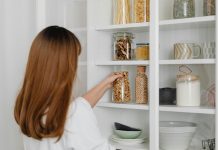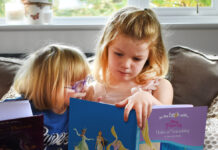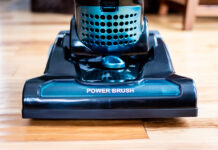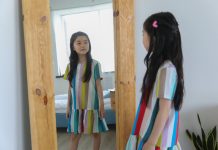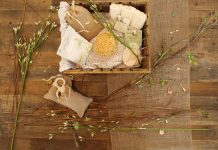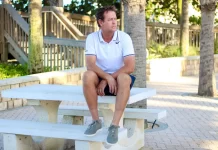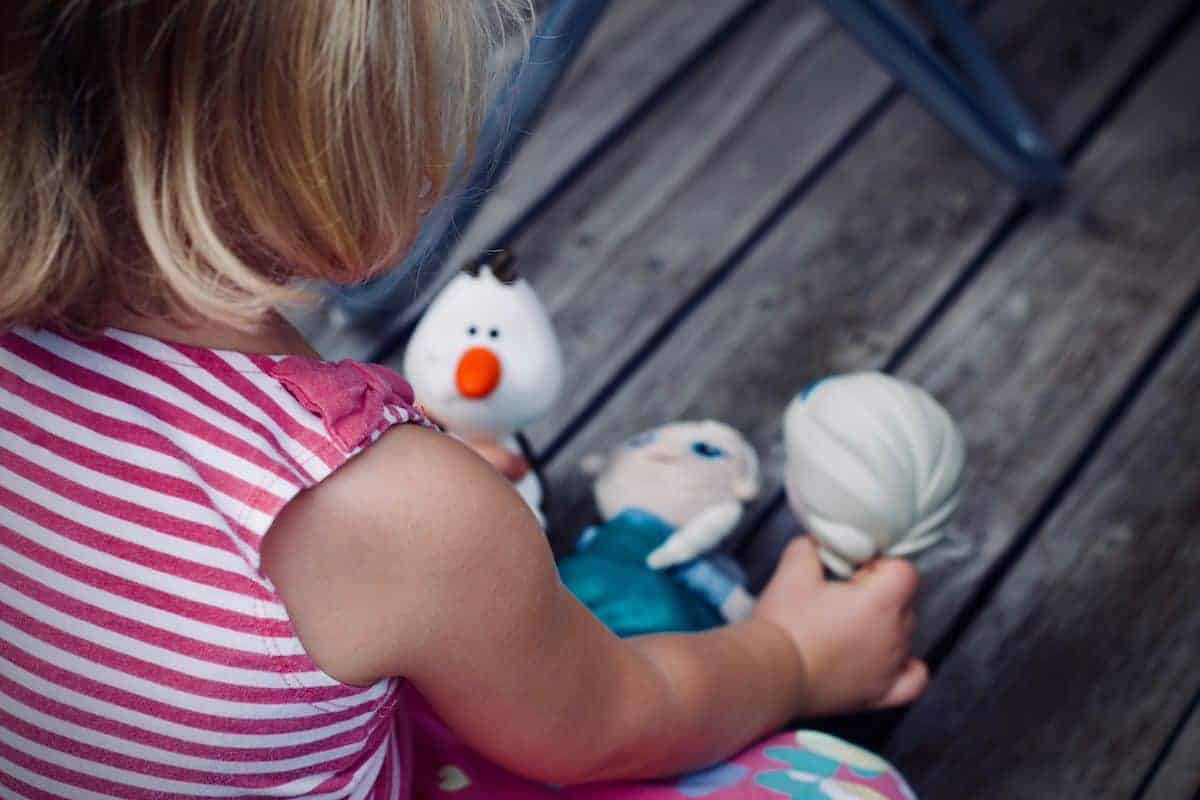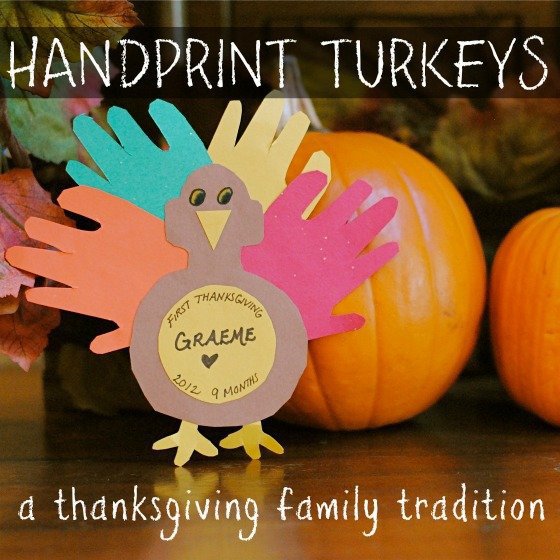Playrooms. They are the epitome of a double-edged sword; A must have if you have any hopes for a (somewhat) toy-free living area, but yet the amount of upkeep and energy that goes into keeping one organized is a never-ending battle. Pinterest fills your head with dreams of colorful play spaces, oozing with educational activities, bright, happy children, properly labeled bins, and perfectly crafted wooden blocks stacked neatly on table in the corner – or perhaps, made into the most elaborate of castles. We can barely contain our excitement until we look around our own home and notice two major things: 1. Our kids love the gawdy, noisy plastic toys, and 2. We have no space. Where are these bright and airy play spaces of Pinterest land? If you are tight on space, but still hoping to create a fun (and organized) space for your children to play freely, we have 10 tips to get you started!
1.Invest in Kid-Friendly Furniture

One of the first steps in designing a playroom is picking out the furniture. In a small playroom, going small is the best option. Not only is it perfect for a small space, but it’s also a perfect fit for the main occupants of the room – your pint sized kiddos. Small tables, small chairs, and small storage units are all ideal furniture options for a play room. And don’t be afraid to be creative when it comes to incorporating furniture into your playroom. In other words, turn something ordinary into something extraordinary and functional.
Product Recommendation
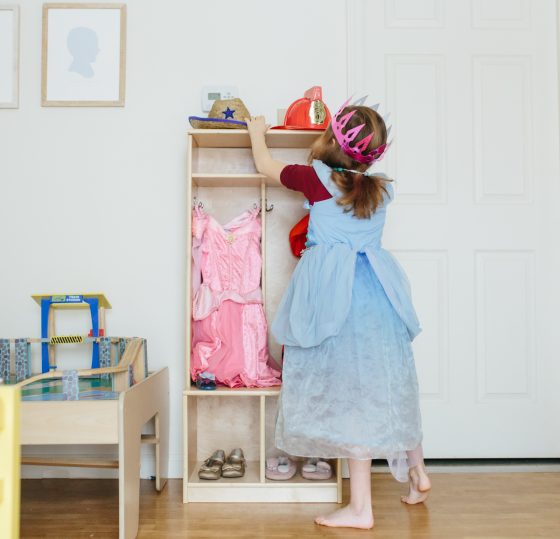
Thinking outside of the box, we turned the Little Partners My First Cubby into a dress-up center for our playroom. While designed to be a cubby for backpacks, coats, shoes, and gloves (which would be a great addition to a playroom as well!), we had a need for a place to display princess gowns, glass slippers, cowboy hats, and a fireman get up. Dress up clothes are a must in most playrooms and having them displayed neatly can be an inviting way to encourage imaginative play. We didn’t just want throw them in a box, or tuck them away in a closet. The kids wanted them displayed, openly ready to be put on and played with.
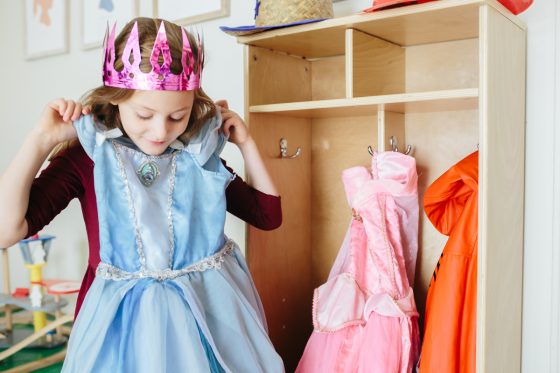
The amount of space and options that the My first Cubby provided gave us the idea to go ahead and turn it into something fun that the kids can use in their playroom. The My First Cubby comes with four double hooks to allow for ample space to hang all of your child’s costumes, as well as upper and lower cubbies for accessories, shoes, play make-up, fancy hats, and whatever else fills your child’s imagination. Made of solid wood, the cubby is built to stand, even providing a small ledge under the main lockers for a child to sit. Lastly, we also love that the cubby comes in four shades – natural, espresso, white, and earl grey – making it a classy and sleek addition to any room.
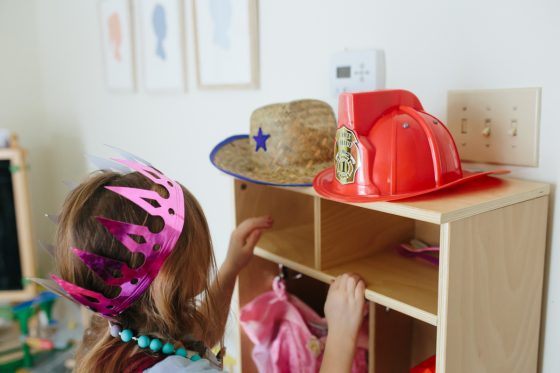
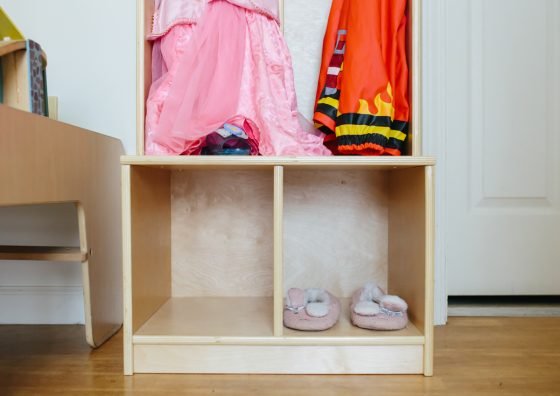
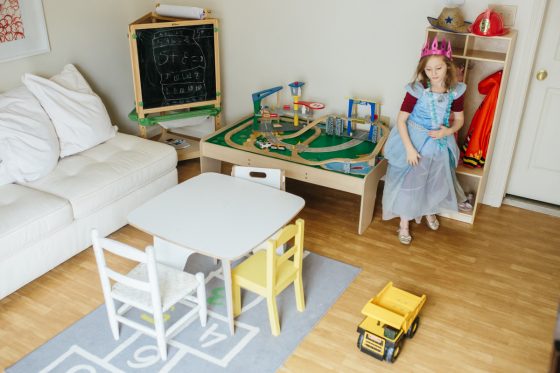
2. Display children’s own artwork in frames
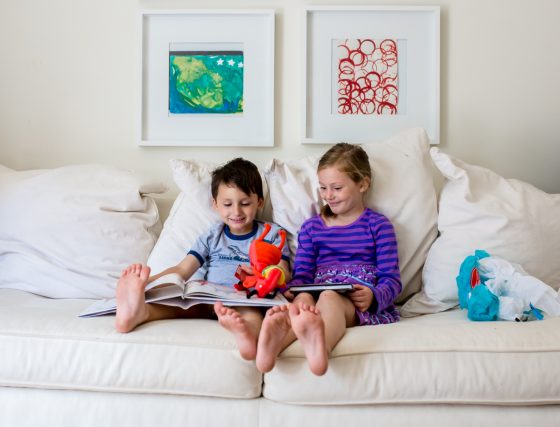
If your children are of preschool age, then you most likely have a drawer somewhere in your home overflowing with the most beautiful artwork you have ever seen. Okay, so maybe that’s a stretch, but every parent knows that if just one piece of that precious work is found discarded, it can be the end of their little world. But displaying each piece quickly adds to a fridge of clutter, so instead, ask your child to pick a few of their very favorite pieces, frame them, and hang them nicely on the wall. As the seasons change and your child’s handiwork grows, swap them out. Not only does your child get the chance to feel proud of their displayed work, but you have the ability to create an organized and sophisticated wall space.
3. Rotate Toys
A child will beg for a toy for weeks before a holiday or birthday, play with it for a bit after finally getting their hands on one, and then quickly discard it to the wayside, never to be touched again. Our playrooms are full of discarded toys that have lost their newness magic. An easy way to fix this problem is to gather up the toys in the playroom and rotate through them throughout a period of time. A good rule is to have about 20% of your child’s toys out at a time, leaving the other 80% put away and out of sight. After a few weeks, swap out a few of the toys and watch how your child lights up when they see something “new” to tinker with. This will also keep your playroom mess at a minimum, with only a fraction of your child’s toys within reach at any given moment.
4. Think like a minimalist
Which leads to our next tip – think minimalist. A playroom doesn’t have to be stacked to the ceiling to be exciting for a child. The purpose of a playroom is to provide a child a space of their own to play freely without limits. Too many options and too many distractions in one room is a recipe for chaos. Design the playroom with items suited for a child only and keep it simple – a place to create art, a place to make believe, a place to read, and a place to move – for example.
5. Create a space for creativity
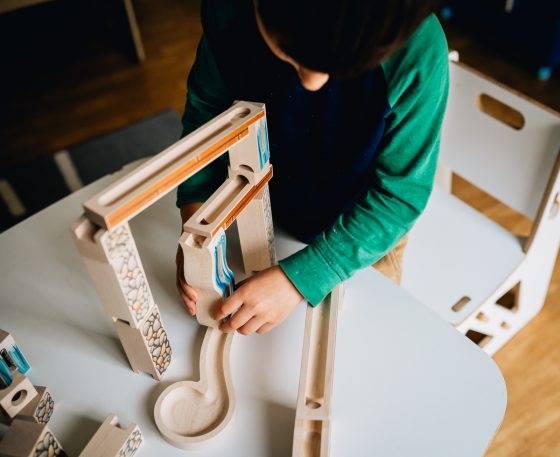
When we think of a playroom, we automatically think of TOYS. But a playroom doesn’t have to be all about the toys. If it’s designed effectively, a child can use it for any educational purpose – to include art, science, problem-solving, writing, reading, or even eating. A child-sized table at the center of the room with accompanying chairs offers an array of opportunities for fun and learning. Keeping it clear of clutter and ready for Lego building, play dough making, watercolor painting, or taste-testing kitchen creations, children are inspired by hands-on learning, made simple by having a space of their very own.
6. Skip the toy box
In theory, a toy box sounds amazing – just chuck it all in there, close the lid, and be done with it. But in actuality, it just means that nothing is ever properly put away and as we all know, once out of sight, out of mind. Toys pushed to the very bottom are quickly forgotten about, or even worse, the toy box becomes a fun “dump box” for an eager child looking for one toy in particular. A toy box is simply a catch all for clutter. Also, a toy box actually takes up a good amount of floor space, especially if you are already in a cramped room. Which leads us to our next point…
7. Hide away storage
Whether it’s under the bed storage bins, hanging storage on the back of a closet door, or bins that slide perfectly under a table, there are a million ways to hide storage and most can be found on Pinterest. If DIY isn’t your thing, plenty of furniture manufacturers have caught onto this need as well and have designed furniture with hidden drawers or playroom storage furniture that doubles as something fun.
8. Everything has a home
Come up with a plan for organizing and cleaning your playroom, and teach your children. If you decide to label bins, show your children which toys go in which bins. If they can’t yet read, pictures taped to the bins are a great option. If you would like your child to put away each toy after they are done playing with it, you will need to coach them through it for awhile before it becomes habit. Otherwise, instill a nightly clean up before before dinner and make sure your child knows each toy’s “home”.
9. Declutter, remove, and move out
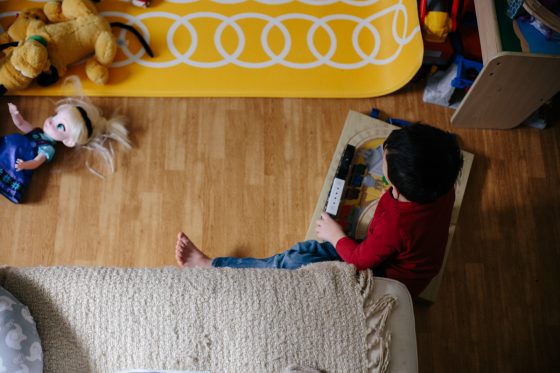
Toys break, pieces go missing, batteries die, books rip – it’s all part of childhood. If these things happen, take them out of the toy room and discard of them or fix them. If your child has a toy that isn’t used or loved, sell it or give it away to someone who will. Sort through your child’s toys periodically and make decisions as to whether to keep, donate, sell, or trash; this way you won’t end up overwhelmed one day with years worth of toys that have suddenly gotten way out of control.
10. Incorporate color-coded bins
If you have multiple children, a great way to instill responsibility and keep a sense of organization is to color code bins for each child. Have your child pick their favorite color and keep their toys – or at least their favorite toys – in their own bins. A separate color for shared toys can also be used. This is also a great way to keep a playroom looking cohesive and uniform.
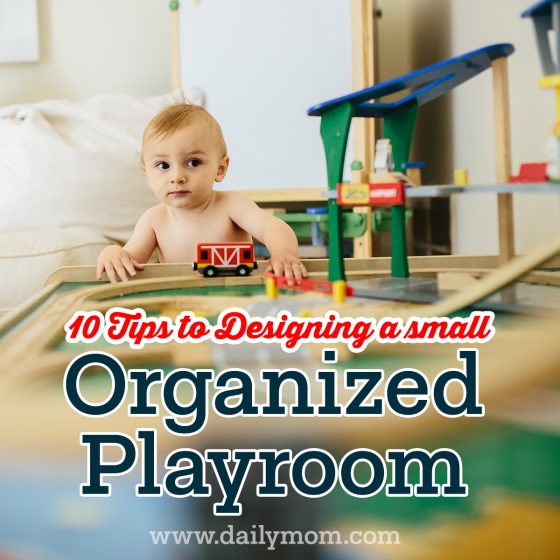
Photo Credit: Stephanie High Photography | Jelleke Vanooteghem on Unsplash

